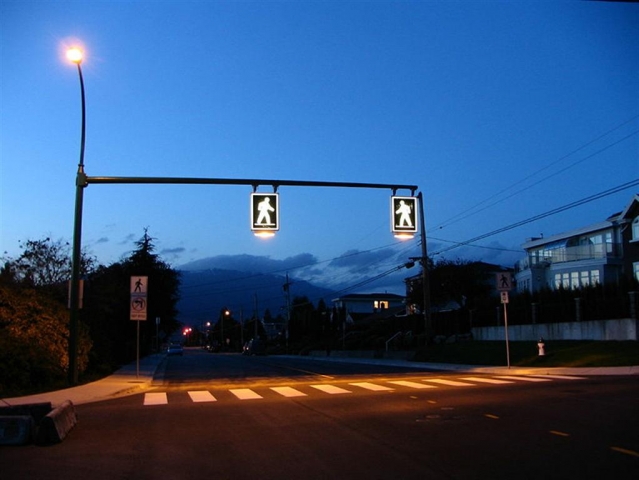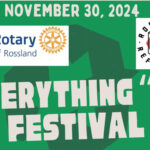A net gain in stalls and an end to the hated 'pedestrian' signage on Columbia? The downtown parking issue gets some clarification
ISL’s proposal for the downtown rebuild involves some rejigging of the city’s downtown parking stalls–a move that has generated some concerns and controversy. Columbia Ave. currently has 108 parking stalls from the west side of St Paul to the east side of Spokane. Transportation Association of Canada (TAC) guidelines, however, won’t allow this many parking stalls in the downtown’s new design. Following TAC guidelines eliminates 14 parking stalls, reducing the total number to 96.
Some of these stalls are lost to maintain clear sight-lines, and some are lost because the TAC dimensions for angled parking (3 metres wide by 5.3 metres deep) are larger than the angled parking stalls as currently painted (2.75 metres by just under 5 metres). Parking stalls on the north side of St Paul and Columbia must be eliminated for the benefit of large trucks turning that corner after coming up the hill.
Adding bulb outs at the intersections eliminates another three stalls, reducing the total to 93. “The bulb outs themselves are mostly in the areas you can’t have parking,” Terness said.
Parallel parking along the north side of Columbia for one block between Queen and Washington eliminates another 7 stalls, but allows the sidewalk width to be increased from 4 metres to almost 7 metres along the 100 metre strip.
The only alternative to avoid TAC guidelines is to scrap the entire project, including the infrastructure upgrades for water, sewage, and storm pipes, and leave the street as it lies. This “do nothing” option would have MOTI repave the two lanes down the middle of Columbia Ave, and move on; we save money in the short term and cross our fingers as we leave old pipes in the ground.
If we replace the pipes now and partner with MOTI, however, MOTI will help pay to regrade Columbia Ave to drain into “swales” that line the highway to reduce winter maintenance and keep parking stalls dry. But it’s just like renovating an old home under new building codes: we’ll have to come into “compliance.”
Moving ahead, the design will have to go through what MOTI’s Tim Dyer called a “very thorough review” by engineering groups. “There’s a lot of liability signed off in that name,” Dyer said, explaining why the national “guidelines” for transportation carry such weight for the ISL design team.
First and foremost, Columbia Ave. is a provincial highway.
“Our jurisdiction is the full width of the right of way,” Dyer explained. The ministry reviews and approves designs, “but we don’t build sidewalks: the municipality is responsible for that and for underground infrastructure. We allow them, obviously. Our responsibility is the surface, curb to curb, and we split [the cost of] drainage.”
Furthermore, although Dyer recognized it was unrealistic, he agreed that “on any arterial” MOTI would prefer no parking at all plus a median fence to separate the lanes and deter jaywalking. He laughed and said, “we know it’s not going to happen … we are not out there to kill businesses.”
But no parking and a fence is where MOTI begins its negotiations with municipalities as a matter of course, and MOTI also prefers parallel parking over diagonal parking—”There’s much safer movement out into the driving lanes,” Dyer said—but the ministry has been willing to work with diagonal parking that complies with TAC guidelines.
Dyer is very pleased with the bulb outs in the design for the way they improve pedestrian visibility. He noted that bulb outs shorten the distance to cross the road and so allow MOTI to remove the large, blinking pedestrian signage at Columbia and Washington and replace it with a zebra-striped crossing at each intersection along Columbia.
“We just rebuilt the arterial up in Kimberley,” Dyer said. “Every single intersection has bulb outs along the full 3.8 km length. It’s been really well received, the residents are pleased. They went to referendum and there was 70 per cent approval for the expenditure. It really tidied up the drive into Kimberley.”
TAC guidelines eliminate 14 parking stalls on Columbia, bulb outs eliminate another 3, and parallel parking eliminates 7 more, but city planners said these 24 stalls can be more than compensated with new parking options that sum “conservatively” to 62 potential new stalls within half a block of Columbia Ave.
Thirty new parking stalls are available in the Thrift Store lot, newly purchased by the city and accessible from three lanes. With excavation, the lot behind the pharmacy can be increased to 15 from six stalls. The Queen street parking behind the NDCU can be reorganized into 40 or more stalls from the current 25. Along LeRoi to the highway there is room for six to eight more stalls.
Between the NDCU and RossVegas, city staff have also suggested designating these 10 diagonal stalls for seniors, handicap, or short-term parking. City staff have also maintained that merchants should not park on the main street, but should leave these stalls for their customers and use First Ave. or Queen St. north of Columbia instead.
Following the public meeting on Nov. 21, ISL Engineering is well aware that Rosslanders want to know the “streetscaping” budget breakdown. ISL project manager Kevin Terness said the issues of parking, pedestrians, and price tags for different streetscape scenarios will be addressed in a “full information packet for new council members” that the ISL team are currently assembling and will make available to council (and the public) before Dec. 5 when the new council meets for the first time. Subsequently, ISL will mail residents a “refined, simplified version … so everyone gets enough information to make a proper decision about how they feel about the project.”

























